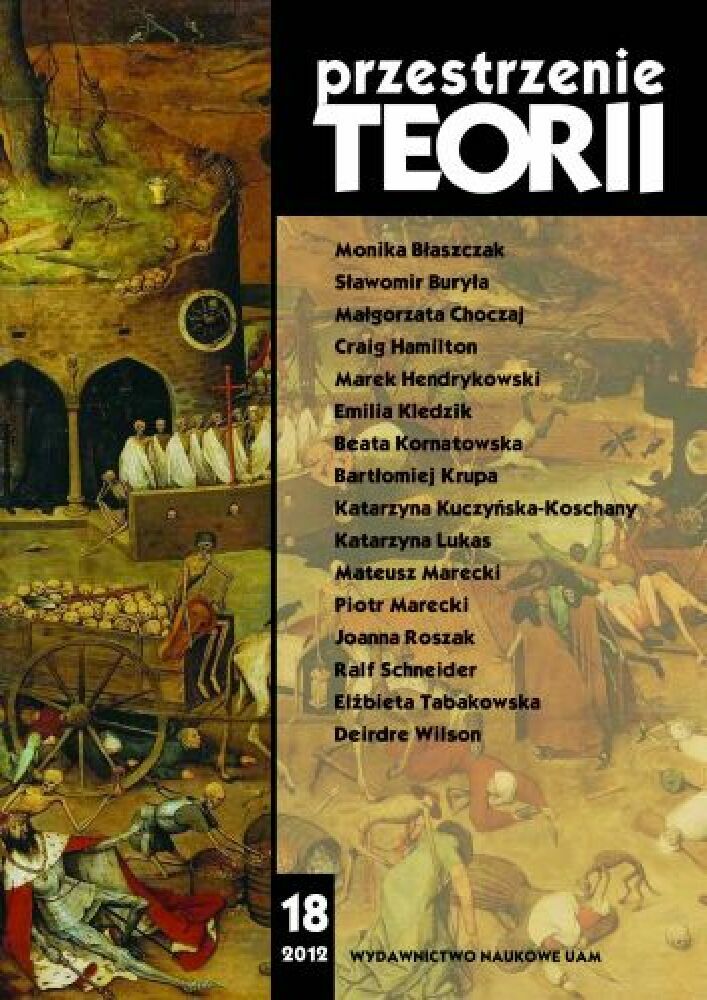Abstrakt
Luchino Visconti’s masterpiece “Death in Venice” (“La morte in Venezia”) has the reputation of being a quintessential work of European art film, the epitome of 1970s auteur cinema, one of the most impressive film poems ever made. Based on famous novel written by Thomas Mann in 1911 (after Gustav Mahler’s death), it is a profound and intriguing artwork concerned at its depth to communicate the most important human meanings like the essence of death or powerfully symbolic depiction of 19th Europe ideas and values in a fascinating filmic imagery. The 1971 film adaptation is not only a lament for a lost nobility and a swan song for human sublime forms of life created by the noble class, but also an epic panorama of the old Europe that evokes the cultural upheaval brought on by the collapse of ‘la belle époque’. In his comparative study Marek Hendrykowski explores central motifs of the literary and film versions of “Death in Venice” and expands on this contention, pinpointing the various sources of the film’s uniquely impressive effect. Hendrykowski’s contextual analysis and interpretation, written in a lively and accessible style, traces the complex motifs that run through “Death in Venice” and discovers step by step the elements (Mahler’s music, the use of authentic locations, high culture vs mass culture conflict, biographical background, etc.) evoked and appealed in Visconti’s film.Bibliografia
T. Mann, Śmierć w Wenecji, [w:] tenże, Nowele, przeł. L. Staff, oprac. R. Karst, Warszawa 1956, s. 290.
A. Helman, Urok zmierzchu. Filmy Luchina Viscontiego, Gdańsk 2001, s. 247.
Licencja
Autorzy
Autorzy tekstów przyjętych do publikacji w czasopiśmie „Przestrzeniach Teorii” są zobowiązani do wypełnienia, podpisania i odesłania na adres redakcji umowy o udzielenie nieodpłatnej licencji do utworów, z zobowiązaniem do udzielania sublicencji CC.
Zgodnie z umową, autorzy tekstów opublikowanych w czasopiśmie „Przestrzeniach Teorii” udzielają Uniwersytetowi im. Adama Mickiewicza w Poznaniu niewyłącznej i nieodpłatnej licencji oraz zezwalą na użycie sublicencji Creative Commons Attribution-NonCommercial-NoDerivatives 4.0 International (CC BY-NC-ND 4.0).
Autorzy zachowują prawa do dalszego, swobodnego rozporządzania utworem.
Autorzy, którzy wykorzystują w swoim tekście cudze utwory (np. ilustracje, fotografie) proszeni są o dostarczenie do redakcji czasopisma zgodę na publikację od uprawnionych podmiotów.
Użytkownicy
Zainteresowani użytkownicy internetu uprawnieni są do korzystania z utworów opublikowanych po 2015 roku „Przestrzeniach Teorii” tylko w calach niekomercyjnych, pod następującymi warunkami:
- uznanie autorstwa - obowiązek podania wraz z rozpowszechnionym utworem, informacji, o autorstwie, tytule, źródle (odnośniki do oryginalnego utworu, DOI) oraz samej licencji;
- bez tworzenia utworów zależnych - utwór musi być zachowany w oryginalnej postaci, nie można bez zgody twórcy rozpowszechniać np. tłumaczeń, opracowań.
Do wszystkich tekstów opublikowanych przed 2015 r. prawa autorskie są zastrzeżone.
Inne
Uniwersytet im. Adama Mickiewicza w Poznaniu zachowuje prawo do czasopisma jako całości (układ, forma graficzna, tytuł, projekt okładki, logo itp.).
